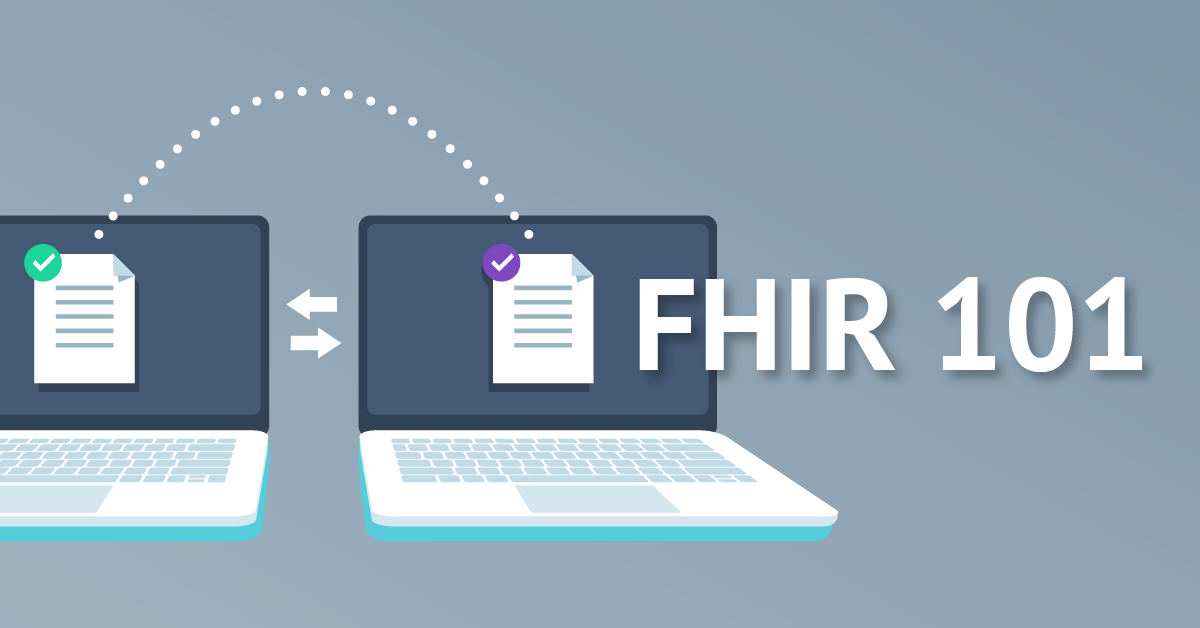
Why is FHIR® so important?
Over the past few years, FHIR (Fast Healthcare Interoperability Resources) has emerged as the preferred standard for healthcare interoperability. This standard uses modern web technologies to store and transmit healthcare information, enabling developers to leverage off-the-shelf tools to enhance healthcare provision.
One of the key advantages of FHIR is its ability to facilitate data exchange between healthcare organizations by providing a standard language, vocabulary, and structure for healthcare data. This standardization increases flexibility and scalability in communicating healthcare data, and its use of web technologies makes it accessible to a broad range of people.
In recognition of its benefits, the US government has made FHIR the healthcare data standard, and healthcare providers and payers are now required to support FHIR APIs to remain compliant with regulations. The proposed regulations mandate that data be exchanged via a FHIR API, underscoring the importance of FHIR in the future of data interoperability.
To fully capitalize on the potential of FHIR, organizations must develop a FHIR literacy strategy. This involves educating stakeholders on the benefits of FHIR and how to effectively use it to achieve their goals. By doing so, organizations can maximize the value of FHIR and improve patient outcomes.
In addition, health plans are uniquely positioned to serve as data hubs for healthcare data. To succeed in this role, health plans must adopt an entirely new approach to obtaining and using data, leveraging FHIR to streamline data exchange and improve the quality of healthcare data.
In conclusion, FHIR is a game-changing standard for healthcare interoperability that is transforming the way healthcare organizations share and utilize data. As the future of data interoperability, organizations must prioritize FHIR literacy to unlock its full potential and improve patient outcomes.
The following commentary represents the personal views of the author, which have been informed by extensive research on the subject matter.
FHIR (Fast Healthcare Interoperability Resources) is a standard for electronic exchange of healthcare information. It has gained widespread adoption in recent years due to its ability to enhance healthcare provision by allowing the interoperability of data between healthcare organizations. However, as healthcare data continues to grow, concerns around data privacy and security have become more pressing. One potential solution to these concerns is the use of blockchain technology to store and transmit healthcare data using the FHIR standard.
Blockchain technology is a distributed ledger system that uses cryptography to ensure secure and tamper-proof transactions. It has gained widespread adoption in various industries due to its ability to provide an immutable and transparent record of transactions. The use of blockchain technology in healthcare could address many of the concerns around data privacy and security. By storing data on a decentralized network, it would be more difficult for hackers to compromise the data. Additionally, the use of smart contracts could help ensure that only authorized parties have access to the data.
Using blockchain technology in combination with the FHIR standard could provide additional benefits to healthcare organizations. For example, it could help improve the accuracy and completeness of patient records. By enabling a single source of truth, healthcare providers could have access to complete patient records, regardless of where the data was generated. This could lead to better patient outcomes, as healthcare providers would have a more complete understanding of a patient’s medical history and current health status.
Another potential benefit of using FHIR on a blockchain is the ability to use smart contracts to automate certain processes. For example, smart contracts could be used to automatically execute payments for healthcare services or to enforce data access controls. This could help streamline administrative processes and reduce costs associated with manual data entry and management.
While the use of FHIR on a blockchain is still in the early stages of development, there are already some projects underway exploring this concept. For example, the MIT Media Lab’s MedRec project is exploring the use of blockchain technology to store and share medical records using the FHIR standard. As the use of blockchain technology continues to grow in healthcare, it is likely that we will see more projects exploring the use of FHIR on a blockchain in the future.


Average Rating